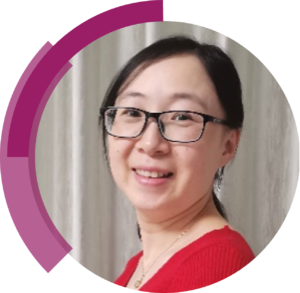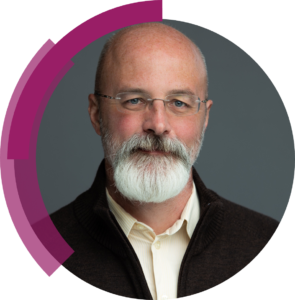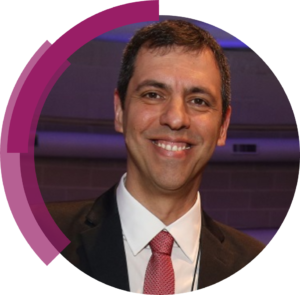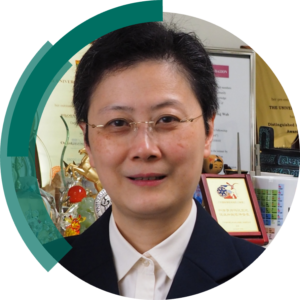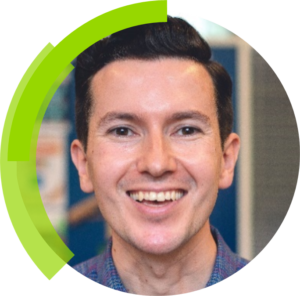Introducing the Materials Horizons Advisory Board – Part 3.
This year we are pleased to celebrate the tenth anniversary of Materials Horizons. We are so grateful to our fantastic community of authors, reviewers, Board members and readers and wanted to showcase just some of them in a series of ‘Community Spotlight’ blog articles.
In this ‘Community Spotlight’, we feature some more of the Advisory Board members who have supported Materials Horizons over the years. We have asked them what they like most about being on the journal’s Advisory Boards, about their recent publications and about their own insights into the future of materials chemistry. Check out their interview responses and related articles below.
| Nan Zhang, Advisory Board Member
Hunan University, China |
Nan Zhang is now a professor in the College of Materials Science and Engineering, Hunan University. Her main research interests include the design and optical properties of metal-based composites for photocatalytic applications and their mechanism investigations
What does it mean to you to join the Advisory Board of Materials Horizons?
“Joining the Advisory Board of Materials Horizons is an opportunity to share my expertise and knowledge to a global community of experts in the area of materials science. It could also provide me with the chance to collaborate with other like-minded individuals and make a meaningful impact on the future of materials chemistry. Additionally, being a part of the Advisory Board of Materials Horizons could offer opportunities for networking and professional development, as well as exposure to new ideas and perspectives.”
What in your field are you most excited about?
“Regulation of the optical properties of metal nanostructures is an important aspect of photocatalysis, as it can significantly affect the efficiency and selectivity of photocatalytic reactions, which is one of my research interests. To regulate the optical properties of metal nanostructures in photocatalytic systems, we employ various techniques such as surface engineering, material synthesis, and optoelectronic design.”
Why do you feel that researchers should choose to publish their work in Materials Horizons?
“Materials Horizons is well-suited for publishing work that explores the properties, applications, and development of new materials. Materials Horizons has a large and diverse readership, including researchers, students, and industry professionals in the field of materials chemistry. This indicates that authors who publish their work in the journal can reach a wide audience and engage with other experts in the field. Moreover, Materials Horizons has a dedicated team of experienced editors who provide thorough and constructive feedback to authors throughout the publication process, facilitating authors to benefit from expert support and guidance in improving their research and preparing it for publication.”
Check out some of Nan Zhang’s latest research here:
A study on the role of plasmonic Ti3C2Tx MXene in enhancing photoredox catalysis
Guanshun Xie, Chuang Han, Fei Song, Yisong Zhu,a Xuanyu Wang, Jialin Wang, Zhenjun Wu, Xiuqiang Xie and Nan Zhang.
Nanoscale, 2022,14, 18010-18021. DOI: 10.1039/D2NR05983E
Changqiang Yu, Linfen Peng, Yisong Zhu, Guanshun Xie, Zhenjun Wu, Xiuqiang Xie and Nan Zhang
J. Mater. Chem. A, 2021,9, 19847-19853. DOI: 10.1039/D1TA02736K
Rising from the horizon: three-dimensional functional architectures assembled with MXene nanosheets
Fei Song, Guohao Li, Yisong Zhu, Zhenjun Wu, Xiuqiang Xie and Nan Zhang
J. Mater. Chem. A, 2020,8, 18538-18559. DOI: 10.1039/D0TA06222G
| Vincent Rotello, Advisory Board Member
University of Massachusetts Amherst, USA |
Vincent Rotello is the Charles A. Goessmann Professor of Chemistry and a University Distinguished Professor at the University of Massachusetts at Amherst. He received his B.S. in Chemistry in 1985 from Illinois Institute of Technology, and his Ph. D. in 1990 in Chemistry from Yale University. He was an NSF postdoctoral fellow at Massachusetts Institute of Technology from 1990-1993, and joined the faculty at the University of Massachusetts in 1993. He has been the recipient of the NSF CAREER and Cottrell Scholar awards, as well as the Camille Dreyfus Teacher-Scholar, the Sloan Fellowships. He has received the Arthur C. Cope Scholar Award in 2023, in 2016 he was awarded the Transformational Research and Excellence in Education Award presented by Research Corporation, the Bioorganic Lectureship of the Royal Society of Chemistry (UK), the Australian Nanotechnology Network Traveling Fellowship, the Chinese Academy of Sciences President’s International Fellowship for Distinguished Researchers. (2016) and the Langmuir Lectureship (2010). He is a Fellow of both the American Association for the Advancement of Science (AAAS) and of the Royal Society of Chemistry (U.K.). He is also recognized in 2014, 2015, 2018-2022 by Thomson Reuters/Clarivate as “Highly Cited Researcher”
His research program focuses on using synthetic organic chemistry to engineer the interface between the synthetic and biological worlds, and spans the areas of devices, polymers, and nanotechnology/bionanotechnology, with over 650 peer-reviewed papers published to date. He is actively involved in the area of bionanotechnology, and his research includes programs in delivery, imaging, diagnostics and nanotoxicology.
What do you like most about being on the Advisory Board for Materials Horizons?
“I really enjoy watching MH grow and mature. I was around when the concept for MH was developed, and was involved in the brainstorming that identified a new and interesting name with “materials” in the title–not an insignificant challenge! I have been engaged with the journal all through the process of the first issue, the first impact factor, and watching the reputation (and IF) of the journal take its place in the forefront of materials science.”
What do you think of Materials Horizons as a place to publish impactful materials chemistry research?
“MH is amongst my very favourite places to publish, and we’re always proud when one of our papers is accepted. The journal features an excellent combination high impact and rigor, traits that are increasingly becoming difficult to find in one place. “
Check out some of Vince Rotello’s latest research here:
Taewon Jeon, Jessa Marie V. Makabenta, Jungmi Park, Ahmed Nabawy, Yagiz Anil Cicek, Sarah S. Mirza, Janelle Welton, Muhammad Aamir Hassan, Rui Huang, Jesse Mager and Vincent M. Rotello
Mater. Horiz., 2023,10, 5500-5507. DOI: 10.1039/D3MH01108A
Joseph Hardie, Jessa Marie Makabenta, Aarohi Gupta, Rui Huang, Roberto Cao-Milán, Ritabrita Goswami, Xianzhi Zhang, Parvati Abdulpurkar, Michelle E. Farkas and Vincent M. Rotello
Mater. Horiz., 2022,9, 1489-1494. DOI: 10.1039/D1MH02042K
Akash Gupta, Riddha Das, Jessa Marie Makabenta, Aarohi Gupta, Xianzhi Zhang, Taewon Jeon, Rui Huang, Yuanchang Liu, Sanjana Gopalakrishnan, Roberto-Cao Milána and Vincent M. Rotello
Mater. Horiz., 2021,8, 3424-3431. DOI: 10.1039/D1MH01408K
| Aldo Zarbin, Advisory Board Member
Federal University of Paraná (UFPR), Brazil |
Aldo José Gorgatti Zarbin is graduated (1990), Master (1993) and PhD (1997) in Chemistry. He is full professor at Department of Chemistry of Federal University of Paraná (UFPR), in Brazil. Fellow of the Royal Society of Chemistry (RSC), former President of the Brazilian Chemical Society (2016-2018), permanent member of the Brazilian Academy of Sciences and coordinator of the National Institute of Science and Technology of Nanomaterials for Life (INCT NanoVida). His main scientific interests are the synthesis, characterization, study of properties and applications of different nanomaterials, as carbon nanotubes, graphene, 2D-materials, metal nanoparticles and conducting polymer-based nanocomposites; their processing as thin films and their application in energy (batteries, supercapacitor, photovoltaics, electrochromic), sensors and catalysis.
What do you like most about being on the Advisory Board for Materials Horizons?
“First of all it is a great honor being member of the Advisory Board of this prestigious Journal. Personally, it represents the recognition of the quality of the science that I have been developing, which is very significant. I really like the contact with the people in the editorial office, who are always very kind, and being able to share opinions and give reports on the high quality articles that are submitted to the journal. It is a privilege to read in advance the best that has been produced in this fascinating area of knowledge.”
Where do you see the materials chemistry field in the next 10 years?
“Materials chemistry is the pathway to solve some of the major problems that currently afflict us. I see materials chemistry concerning about the social relevance of science as a whole, improving the welfare of the people, aiming sustainability and looking for ways to reduce the poverty and the social inequality. For example, I see a strong a development on the synthesis and processing of novel (or old ones with a new guise) materials to improve the efficiency of processes such as CO2 capture and conversion, solar photovoltaic conversion, green hydrogen generation, high-capacity batteries, aqueous-environment operating devices, etc; materials for health (implants, drug-deliver, artificial skin); materials to detoxify the environment; materials to make potable water, etc.”
Some of Aldo Zarbin’s latest research can be found here:
Victor H. R. Souza, Ariane Schmidt and Aldo J. G. Zarbin
J. Mater. Chem. A, 2023,11, 18853-18861. DOI: 10.1039/D3TA02860G
Behnoosh Bornamehr, Volker Presser, Aldo J. G. Zarbin, Yusuke Yamauchi and Samantha Husmann
J. Mater. Chem. A, 2023,11, 10473-10492. DOI: 10.1039/D2TA09501G
Maria K. Ramos, Gustavo Martins, Luiz H. Marcolino-Junior, Márcio F. Bergamini, Marcela M. Oliveira and Aldo J. G. Zarbin
Mater. Horiz., 2023,10, 5521-5537. DOI: 10.1039/D3MH00982C
| Uttam Manna, Advisory Board Member
Indian Institute of Technology Guwahati, India |
 Uttam Manna, Fellow of Royal Society of Chemistry (FRSC), is currently an associate professor at Department of Chemistry—and affiliated with Centre for Nanotechnology and Jyoti and Bhupat Mehta School of Health Science and Technology in Indian Institute of Technology, Guwahati (IITG). He completed his Integrated PhD from IISc Bangalore in 2011. He pursued his post-doctoral research from University of Wisconsin-Madison, USA. He is recognized as an emerging investigator by Journal of Materials Chemistry A (2018), Chemical Communications (2020), Nanoscale (2021) and Chemical Society Reviews (2022). In 2023, Chemical Communications journal also recognized him as a pioneering investigator. He received the CRSI Bronze Medal for the year 2023. He is also a recipient of the Humboldt Research Fellowship for Experienced Researchers in 2021.
Uttam Manna, Fellow of Royal Society of Chemistry (FRSC), is currently an associate professor at Department of Chemistry—and affiliated with Centre for Nanotechnology and Jyoti and Bhupat Mehta School of Health Science and Technology in Indian Institute of Technology, Guwahati (IITG). He completed his Integrated PhD from IISc Bangalore in 2011. He pursued his post-doctoral research from University of Wisconsin-Madison, USA. He is recognized as an emerging investigator by Journal of Materials Chemistry A (2018), Chemical Communications (2020), Nanoscale (2021) and Chemical Society Reviews (2022). In 2023, Chemical Communications journal also recognized him as a pioneering investigator. He received the CRSI Bronze Medal for the year 2023. He is also a recipient of the Humboldt Research Fellowship for Experienced Researchers in 2021.
His research team is interested in designing functional and durable coatings embedded with bio-inspired wettability through the strategic association of robust and facile chemical approaches for energy, environment and health related different applications—including efficient oil/water separation, improving performance of water splitting, self-cleaning, chemical sensing, programmed release of small molecule, anticounterfeiting, no-loss liquid transport, strain sensing, joule heating etc.
What do you think of Materials Horizons as a place to publish impactful materials chemistry research?
“I found Materials Horizons is one of the finest journals to publish research related to material chemistry—as this journal publishes research works on diverse topics of material chemistry. I found researchers from various scientific and engineering backgrounds publishing their exciting and fresh research ideas in this journal. Thus, this journal is widely recognized by the community of material chemistry. I would definitely mention here that the ‘New Concepts’ section of the article in the journal, really helps to quickly recognize the novelty and design principle of the published research works. This journal is a perfect home for seminal research works on materials chemistry.”
Could you provide a summary of your most recent Materials Horizons publication?
“In the published communication (Mater. Horiz., 2023, 10, 2204), we have introduced a self-cleanable multilevel anticounterfeiting interface through covalent chemical modulation of physically unclonable and chemically reactive coating. We have spatially selectively modulated a dual chemically reactive coating—following 1,4-conjugate addition reaction and Schiff-base reaction to achieve an extremely water repellent pattern interface embedded with distinct water adhesion property and fluorescence property. The selective chemical modulation controls the fraction of contact area between water and chemically modified interface. Eventually this principle provided a facile basis to naked-eye visualization of hidden patterns on water exposure—and it disappears immediately after removal of the pattern interface from water exposure.”
Read some of Uttam Manna’s research here:
Manideepa Dhar, Ufuoma I. Kara, Supriya Das, Yang Xu, Sohini Mandal, Robert L. Dupont, Eric C. Boerner, Boyuan Chen, Yuxing Yao, Xiaoguang Wang and Uttam Manna
Mater. Horiz., 2023,10, 2204-2214. DOI: 10.1039/D3MH00180F
Angana Borbora, Robert L. Dupont, Yang Xu, Xiaoguang Wang and Uttam Manna
Mater. Horiz., 2022,9, 991-1001. DOI: 10.1039/D1MH01598B
Supriya Das, Rajan Singh, Avijit Das, Sudipta Bag, Roy P. Paily and Uttam Manna
Mater. Horiz., 2021,8, 2851-2858. DOI: 10.1039/D1MH01071A
| Shannon Yee, Advisory Board Member
Georgia Institute of Technology, USA |
 Dr. Shannon Yee is an Associate Professor at the G.W.W. School of Mechanical Engineering at the Georgia Institute of Technology. Dr. Yee joined Georgia Tech in 2014 directly from his PhD at the University of California Berkeley. Amid his studies, he joined the US. Dept. of Energy’s Advanced Research Projects Agency for Energy (ARPA-E) during its inaugural year as the first ARPA-E Fellow. Dr. Yee completed his MS in Nuclear Engineering in 2008 and his BS in Mechanical Engineering in 2007, both from The Ohio State University. In 2008, he was awarded a prestigious Hertz Fellowship. In 2015, Dr. Yee was selected for an AFOSR Young Investigator Award to develop polymer thermoelectrics. Dr. Yee is the recipient of the 2017 American Society of Mechanical Engineering Pi-Tau-Sigma Gold Medal award for “outstanding contributions to the field of Mechanical Engineering in the first decade of one’s career.” In 2019, Shannon was selected for an ONR Young Investigator Award to develop polymer thermal switches. Most recently, Dr. Yee has been directing the Generation 2 Reinvent the Toilet (G2RT) program, and was recognized as one of Bill Gate’s Heroes in the Field in 2021. Additionally, he has been instrumental at Georgia Tech is helping to establish The New York Climate Exchange and is currently serving as the co-chair for Research, Technology, and Commercialization efforts, coordinating a global community of academic, corporate, and non-profit institutions to address climate change.
Dr. Shannon Yee is an Associate Professor at the G.W.W. School of Mechanical Engineering at the Georgia Institute of Technology. Dr. Yee joined Georgia Tech in 2014 directly from his PhD at the University of California Berkeley. Amid his studies, he joined the US. Dept. of Energy’s Advanced Research Projects Agency for Energy (ARPA-E) during its inaugural year as the first ARPA-E Fellow. Dr. Yee completed his MS in Nuclear Engineering in 2008 and his BS in Mechanical Engineering in 2007, both from The Ohio State University. In 2008, he was awarded a prestigious Hertz Fellowship. In 2015, Dr. Yee was selected for an AFOSR Young Investigator Award to develop polymer thermoelectrics. Dr. Yee is the recipient of the 2017 American Society of Mechanical Engineering Pi-Tau-Sigma Gold Medal award for “outstanding contributions to the field of Mechanical Engineering in the first decade of one’s career.” In 2019, Shannon was selected for an ONR Young Investigator Award to develop polymer thermal switches. Most recently, Dr. Yee has been directing the Generation 2 Reinvent the Toilet (G2RT) program, and was recognized as one of Bill Gate’s Heroes in the Field in 2021. Additionally, he has been instrumental at Georgia Tech is helping to establish The New York Climate Exchange and is currently serving as the co-chair for Research, Technology, and Commercialization efforts, coordinating a global community of academic, corporate, and non-profit institutions to address climate change.
What do you like most about being on the Advisory Board for Materials Horizons?
“I enjoy connecting with research colleagues and supporting the dissemination of knowledge through the Materials Horizons publication. “
What do you think of Materials Horizons as a place to publish impactful materials chemistry research?
“Materials Horizons is unique. It provides a platform to share materials chemistry developments that enable new technologies.“
Where do you see the materials chemistry field in the next 10 years?
“I see materials chemistry evolving to embrace the opportunity of providing designer materials with custom electronic, thermal, optical, and mechanical properties.”
In your opinion, how could members of the community be more involved with the journal?
“Members of the materials chemistry community can be more involved with the journal through engaging in the publication discourse.”
Some of Shannon Yee’s latest research can be found here:
Katrina G. Brathwaite, Quinton K. Wyatt, Amalie Atassi, Shawn A. Gregory, Eric Throm, David Stalla, Shannon K. Yee, Mark D. Losego and Matthias J. Young
Nanoscale, 2023,15, 6187-6200. DOI: 10.1039/D3NR00708A
Sandra L. Pittelli, Shawn A. Gregory, James F. Ponder, Jr, Shannon K. Yee and John R. Reynolds
J. Mater. Chem. C, 2020,8, 7463-7475. DOI: 10.1039/D0TC00914H
Electron transport in a sequentially doped naphthalene diimide polymer
Khaled Al Kurdi, Shawn A. Gregory, Samik Jhulki, Maxwell Conte, Stephen Barlow, Shannon K. Yee and Seth R. Marder
Mater. Adv., 2020,1, 1829-1834. DOI: 10.1039/D0MA00406E
| David Mecerreyes, Advisory Board Member
University of the Basque Country, Spain |
 Graduated from the University of the Basque Country in 1994. He obtained the Ph.D. degree in Polymer Chemistry under de supervision of Dr. Robert Jèrôme in 1998 from University of Liege (Belgium). He carried out a post-doctoral at IBM Almaden Research Center and Stanford University (USA) working in the team of Dr. James L. Hedrick and Prof. Craig Hawker. In 2001 he joined CIDETEC where he was in charge of the Nanomaterials Unit. In January 2011, he got an Ikerbasque Research Professorship at POLYMAT/University of the Basque Country (UPV/EHU).
Graduated from the University of the Basque Country in 1994. He obtained the Ph.D. degree in Polymer Chemistry under de supervision of Dr. Robert Jèrôme in 1998 from University of Liege (Belgium). He carried out a post-doctoral at IBM Almaden Research Center and Stanford University (USA) working in the team of Dr. James L. Hedrick and Prof. Craig Hawker. In 2001 he joined CIDETEC where he was in charge of the Nanomaterials Unit. In January 2011, he got an Ikerbasque Research Professorship at POLYMAT/University of the Basque Country (UPV/EHU).
Prof. David Mecerreyes is a creative polymer chemist and has pioneered important topics in polymer and materials science such as ring-opening polymerization (PhD times), polymer brushes and single-chain nanoparticles (post-doc times), porous PBI proton conducting membranes, poly(ionic liquid)s and polymer electrolytes for batteries (last years). He has published more than 300 scientific articles in polymer, chemistry and materials journals and delivered more than 70 invited lectures around the world.
What do you like most about being on the Advisory Board for Materials Horizons?
“To me it is a honor and very prestigious to be part of the Advisory Board. I love the opportunity to directly participate in the development of the journal and contribute with our best articles coming from our group as well as to have a close view of the current advances in materials science and applications.”
What do you think of Materials Horizons as a place to publish impactful materials chemistry research?
“I believe Materials Horizons is “the place” to publish impactful and breakthrough articles. In particular, articles where new materials chemistry directions and concepts are demonstrated.”
Where do you see the materials chemistry field in the next 10 years?
“I see that research in polymers and materials chemistry will be more and more important in the next 10 years. The research interests will be related to the societal needs in areas such as health, energy and environment. I see an evolution of the current research topics in circular economy, sustainability of materials. I believe that the performance and the applications of the materials will be even more important factor in the future.“
In your opinion, how could members of the community be more involved with the journal?
“It is a simple but difficult question to answer. I guess that the members of the community should see the journal present and close to them and in an interactive way through congress participation as well as the social media.”
Could you provide a summary of your most recent Materials Horizons publication?
“We recently published an article entitled Direct ink writing of PEDOT eutectogels as substrate-free dry electrodes for electromyography DOI: 10.1039/D3MH00310H. Here we showed the development of mixed ionic electronic conductive materials based on Deep eutectic solvents DES and poly(3,4 ethylenedioxythiophene)/poly(styrenesulfonate) (PEDOT:PSS). We called this new materials eutectogels which are biocompatible, cost-effective, easy to make and show high ionic and electronic conductivity values.
Due to the rheological properties of these eutectogels we showed the direct printing of electrodes for electrophysiology, called eutectic-tattoos (Eutecta2). The obtained Eutecta2 electrodes were self-standing, stable after drying, and reusable, as well as 3D printable in custom shapes.”
Check out some of David Mecerreyes’ latest research here:
Direct ink writing of PEDOT eutectogels as substrate-free dry electrodes for electromyography
Ana Aguzin, Antonio Dominguez-Alfaro, Miryam Criado-Gonzalez, Santiago Velasco-Bosom, Matías L. Picchio, Nerea Casado, Eleni Mitoudi-Vagourdi, Roque J. Minari, George G. Malliaras and David Mecerreyes
Mater. Horiz., 2023,10, 2516-2524. DOI: 10.1039/D3MH00310H
Nicolas Goujon, Marianne Lahnsteiner, Daniel A. Cerrón-Infantes, Hipassia M. Moura, Daniele Mantione, Miriam M. Unterlass and David Mecerreyes
Mater. Horiz., 2023,10, 967-976. DOI: 10.1039/D2MH01335E
Self-healable dynamic poly(urea-urethane) gel electrolyte for lithium batteries
Fermin Elizalde, Julia Amici, Sabrina Trano, Giulia Vozzolo, Robert Aguirresarobe, Daniele Versaci, Silvia Bodoardo, David Mecerreyes, Haritz Sardon and Federico Bella
J.Mater. Chem. A, 2022,10, 12588-12596. DOI: 10.1039/D2TA02239G
We hope you have enjoyed meeting our Advisory board members.
Or to read more of our community spotlight blog, return to the home page here


